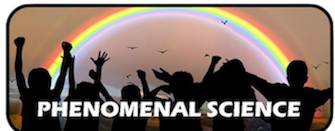
Area: Force and Motion
This Kindergarten unit is the SECOND in the curriculum of three (3) units developed to address the Kindergarten science standards of the Michigan Science Standards related to Force and Motion.
You have just read the general description for this Phenomenal Science Unit. Before you continue your review, it would be very valuable to our field testing process for the 21 Units of Phenomenal Science for us to gather information about those educators who are reviewing each of the Units. Thank you. Please start your review with this BRIEF SURVEY. Enjoy your review.
A force must act upon an object in order for motion to occur. The movement of objects is determined by a push or a pull. Pushing moves something in the direction of the push. When more force is applied to a stationary object, more movement will be observed. When less force is applied to the same object, less movement will be observed. The harder the push on a stationary object, the further the item goes. Pulling something has a similar action. The harder you pull on a stationary object, the faster something moves along. Anything with mass slows down because of that weight. This is inertia. The larger something's mass is, the more inertia it has and the more force you need to make it move. (A beach ball might be larger than a bowling ball but the bowling ball has more mass.)
Students will explore what they know about position, by asking and answering questions about their own position in relation to other people and objects. Students observe how things move around the school €“ how they move, and how fast they move. Students will consider their daily activities and the motions that accompany them. Students begin to describe motion by collaborating with peers to conduct investigations that explore moving objects and acting out different motions. Students understand that they, too, are in motion and exert forces. Students analyze and interpret information while observing objects in motion, classify them by speed, and recognize that speed can change, in order to answer the question, how fast does it go? Their knowledge of speed expands as they plan and conduct investigations with several objects moving at different speeds. They begin thinking about the concept of speed changing, such as slowing down and speeding up. Students use ramps and objects such as toy cars, marbles, etc. to understand that objects move at different speeds and change speed, while exploring cause and effect. Students are introduced to the concept of force as a push or pull. They work cooperatively to make a variety of objects move and begin to recognize that it takes a push or a pull to make an object move. Students will classify forces they use every day as pushes or pulls. Students then begin modeling cause and effect by showing how changing the force exerted on an object can change its speed. Students plan and conduct investigations using ramps resting on stacks of one, two, and three books. They predict and measure the effects of changing the height of the book stacks. They also push the cars with their hands on a flat surface to achieve different speeds. Once they understand the cause and effect of force on speed, students work collaboratively to explore how they can use forces to change the speed of and stop moving objects. Students expand on the concept that forces have strength and direction.
- Subject:
- Applied Science
- Material Type:
- Activity/Lab
- Lesson Plan
- Provider:
- Phenomenal-Science
- Author:
- Phenomenal Science
- Date Added:
- 02/24/2020
